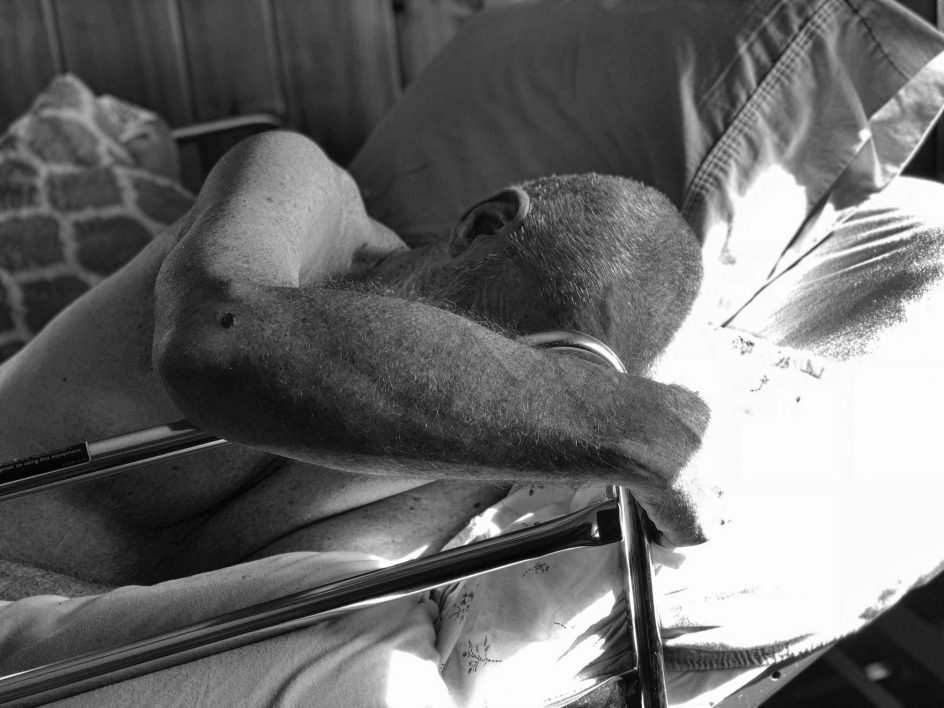
I believe Ed, of all people, will appreciate this photograph, and it’s connection to art, and my very powerful response to it.
He was – is- nearly obsessed with the connection between life and art, something few dairy farmers ever get to worry about. Sitting with him this week, seeing these powerful images, I felt the artist in me nearly exploding with the beauty and power of a strong man dying.
Sometimes, the fortunate photographer looks at an image, and his heart rises, because he knows write away that the image is more than what it appears, it is timeless and universal in some way. I felt this yesterday when I saw the light fall on Ed in the late afternoon, and i felt that the spirits had come to prepare him for the next place.
I saw it again in this photograph.
I knew that image was different, I knew it meant something more than me, or Ed, or cancer.
I could not help but see in that image the 2,000 year old “Dying Gaul,” by the great sculptor Epigonos. It is one of the most famous studies of the art of dying.
“Dying Gaul” is considered a world masterpiece, one of the most incredible pieces of Hellenistic art and I couldn’t help but see the connection between this work and my friend, caught in the grip of terminal brain cancer in his hospital bed in the tiny farming hamlet of White Creek, New York.
This was no Greek battlefield, but it is also a timeless and iconic image. There is a universality to death, because we shall all die. Death belongs to all of us, and is waiting for all of us. Ed has asked – insisted – that I help him bring it out into the open, where it belongs.
Here in my lens, was the fallen warrior, the powerful figure, even when stricken, the muscled chest and arms of a strong and vital man, yet also fallen, a partially-naked hero, stretched out on what may be his death bed. I saw it right away in the strong forearms, the shielded face, asleep but still powerful.
I’ve seen Ed lift giant cows, iron bars, huge gates, giant bales of hay. He is a warrior in our times, as much as anyone can be.
I do not call myself an artist, I think of myself as a writer and photographer, if there is art in that.
But when I saw these images of the dying Ed, I was s truck by the power and vitality of it, even as he fights to live. This is not a person who has given up on life, he is full of life and strength, even now, as life begins to drain from him. He is caught between life and death, that is the moment that the image captures. That was the moment Epigonos was trying to catch.
In Dying Gaul, most historians and curators see the last heroic act of a noble soldier gallantly falling to try to fight again, defying fate, fending off death, elevated by his heroism in standing up to his fate, rather than fleeing it.
I am loathe to call a friend a hero, I wouldn’t wish to glorify or emotionalize him in death, yet there is that quality about Ed, gallantly working to make his death meaningful to others, writing his poems, giving his lectures, drawing his sketches, painting his vases and jars, defying fate, fending off cancer, elevated by his determination to face the end openly and honestly, rather than hiding from it or fleeing it.
For me, this image, like Dying Gaul, represents the meaning of surrender, acceptance, honor, access to something deep inside of us. His Gaul is doomed, but clings to life.
So I am an artist, i guess, and my friend Ed will be tickled to learn that he not only makes art, he is art.

https://www.calebwilde.com/
A blog you might enjoy.
I feel so bad for Ed.
He doesn’t feel badly for himself…He’s at peace with life and death, I think..
The “Farmer” is a fortunate man to have the likes of you standing by him. May God hold him, and the rest of his loved ones closely.